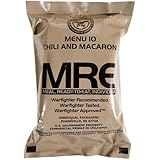Assessing Your Needs
Understanding Different Types of Emergencies
When it comes to building an emergency kit, the first thing you wanna do is think about the types of emergencies you might face. Are you more worried about natural disasters like hurricanes or earthquakes? Or are you looking at scenarios like power outages or even job loss? I found that breaking it down really helps narrow down what to include in my kit.
It’s super important to think about your location too. If you live in a flood-prone area, you’ll want to prepare differently than someone in a fire zone. I remember when I was getting my kit together, I had to make some choices based on what was likely to happen in my area. It feels good to tailor it to my specific needs.
Also, don’t forget about personal needs! If you’ve got kids or pets, their needs should be part of your planning process. My dog, Bella, has specific food and medications that I always make sure to have on hand. It’s all about being prepared for your situation.
Choosing the Right Container
Finding Something Durable
The next step is picking a sturdy container for your supplies. I learned the hard way that a cheap plastic bin won’t hold up when you need it most. Instead, I opted for a waterproof, heavy-duty container—one that could withstand some serious wear and tear. You want something that can take a bump or two without breaking open.
Another tip? Make sure it’s portable! You want to be able to grab and go if you need to. I found a container with wheels worked wonders for me. This way, even when it’s full, I can still move it around easily—especially when I have to load it into the car quickly.
Lastly, consider labeling your kit. Once I updated my kit with new supplies, I slapped a label on the front stating what’s inside. This simple addition saves me time when I’m in a rush. With a quick glance, I can see if I have what I need!
Essential Supplies to Include
Basic Survival Gear
Now, onto the fun part: stocking your kit! You’ll definitely want the basics—think food, water, and first aid supplies. I usually pack granola bars and canned goods with a can opener because they last forever. Plus, water is a must! I aim for at least a gallon per person per day.
Don’t overlook the first aid kit! Mine came with bandages, antiseptic wipes, and even some pain relief medication. You never know when a cut or headache might pop up, and believe me, it’s nice to be prepared.
== > What if ... Get a FREE Subscription to PREPARE
Emergency lights are crucial too! I use both flashlights and lanterns. You never know when the power will go out, and trust me—being in the dark feels pretty unsettling. I keep extra batteries in my kit just in case, so I won’t be left in the dark when I need a light.
Planning Your Kit’s Maintenance
Regular Checks and Updates
Creating your emergency kit isn’t a one-and-done deal; you’ve gotta keep it fresh! I personally set a reminder on my calendar every six months to review what I’ve got. Things like food and medication can expire, and you won’t want to be stuck with something that’s no longer good.
Get Preparedness and Self-Reliance Tips. Subscribe Now!
When I check my kit, I make a list of items that need replacing. It might seem tedious, but trust me, it’s worth it. I remember finding an expired allergy medication once, and I made sure to swap it out immediately after that discovery.
Another important piece is to adjust your supplies based on changing needs. I had a baby last year, so I added diapers and baby food to my kit. You’ve gotta be ready to give your kit a little TLC to ensure it fits your life as it changes.
Storing Your Kit Safely
Finding the Right Location
Now that your kit’s filled to the brim with goodies, the last thing to nail down is where to keep it. I found it best to store mine somewhere accessible but also secure. I put mine in a closet near the front of the house. If I ever need to grab it in an emergency, it’s not buried in a back room.
Be mindful of temperature extremes too. Storing food in an area that gets really hot or cold can lead to spoilage. A stable temperature is crucial to preserving your supplies. I’ve learned to avoid my garage for this very reason!
Lastly, don’t forget to inform your family members where it’s stashed. If something goes down, everybody needs to be on the same page. I had a family meeting to explain what our emergency kit is for and where they can find it; it builds peace of mind for all of us.
Frequently Asked Questions
1. What kind of container should I use for my emergency kit?
Look for a durable, waterproof container that’s easy to transport. Something with wheels can be super helpful if it’s heavy!
2. How often should I check my emergency kit?
I recommend checking it at least every six months. This way, you ensure everything is up-to-date, and nothing is expired!
3. What types of food should I include in my kit?
Canned goods, dried fruits, unsalted nuts, and granola bars are great choices because they have a long shelf life and are easy to pack.
4. Do I really need a first aid kit?
Absolutely! You never know when you might need it. It’s better to have a first aid kit and not need it than the other way around!
5. How can I keep my family informed about the emergency kit?
Hold a family meeting to discuss the kit and its contents. Make sure everyone knows where it’s stored and how to access it in an emergency.






